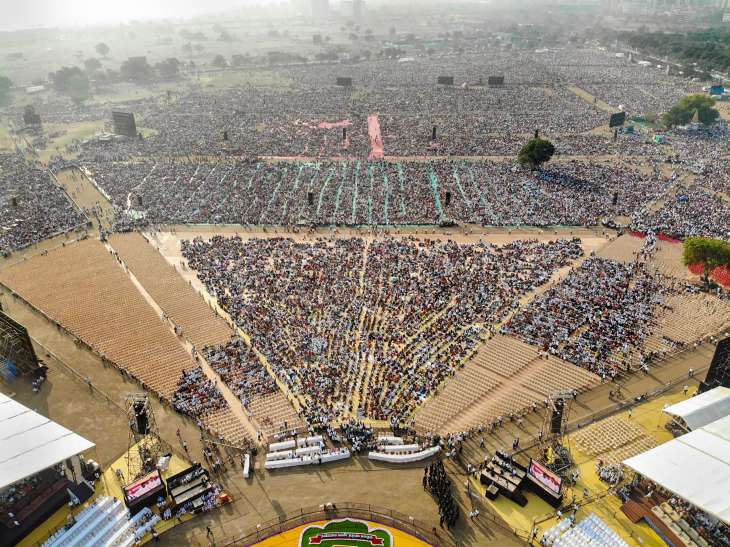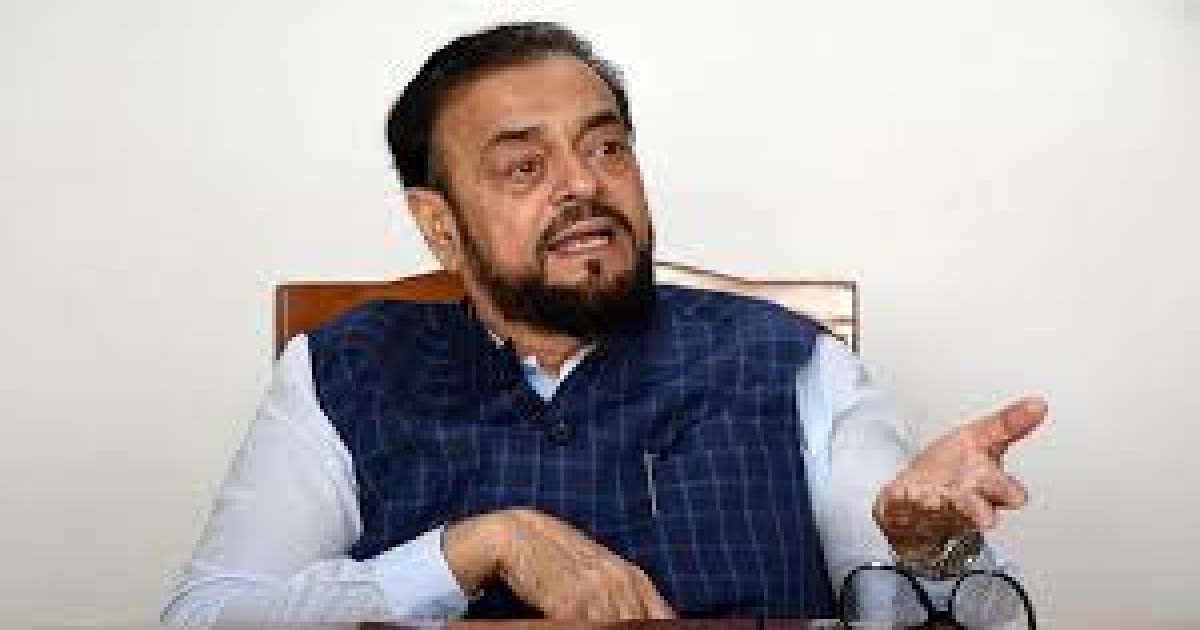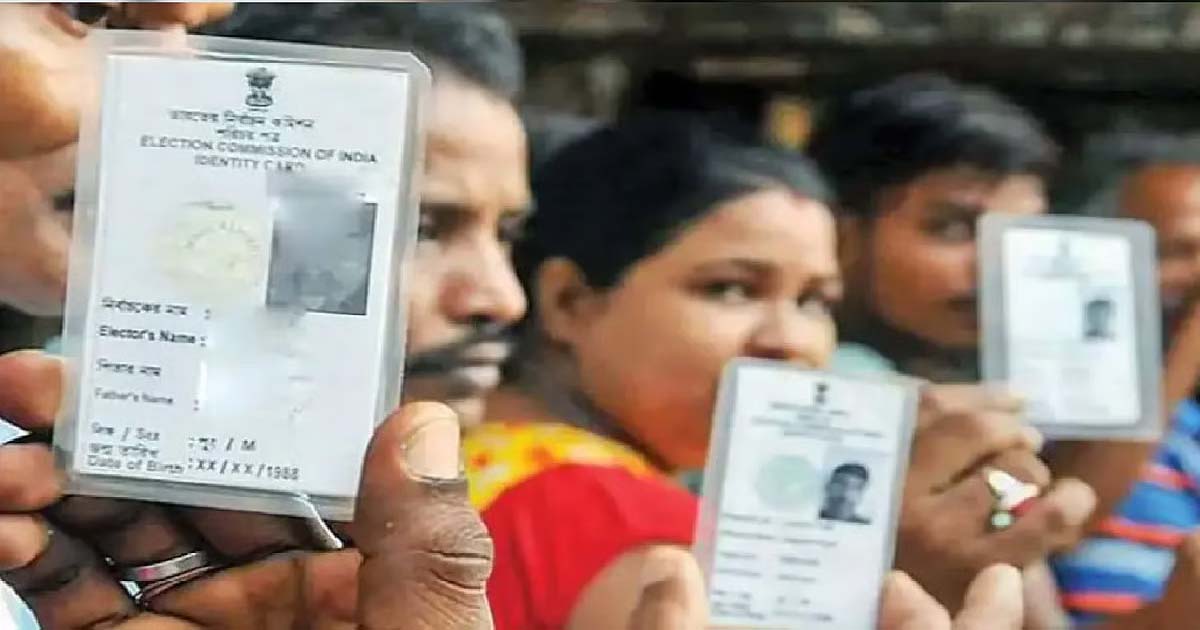Maharashtra
Navi Mumbai: At least 11 dead due to heatstroke at Maharashtra Bhushan award event, more than 120 hospitalised

Navi Mumbai: Eleven people died of sunstroke while many others were said to be critical, after attending the Maharashtra Bhushan award ceremony held at Kharghar in Navi Mumbai on Sunday. More than 120 people suffered from dehydration, after being exposed to the scorching sun for a few hours because of the open-air seating arrangement at the venue.The number of fatalities is likely to go up.
Many of them were rushed to nearby hospitals like the ACTREC at Kharghar and the MGM Hospital at Kamothe, sources said. However, the hospital administration declined to comment.
More than three lakh people were believed to have gathered at the event, where social activist Dattatreya Narayan alias Appasaheb Dharmadhikari was conferred the Maharashtra Bhushan award, a government official said.
Temperature was 42° Celsius at the time of event
The temperature at that time of the day was 42° Celsius. The venue of the event was an open ground, with only VIP attendees having access toshade.Vehicles were stopped around one kilometre away from the venue, from where attendees had to trudge up to the venue and sit in the scorching heat.
Lakhs of followers of Dharmadhikari attended the grand function, held on a sprawling 306-acre ground in Kharghar. Union Home Minister Amit Shah presented the award, instituted by the Maharashtra government, to Dharmadhikari. Maharashtra Chief Minister Eknath Shinde, Deputy CM Devendra Fadnavis were also present on the occasion.
The event, for which people had started gathering since morning, began around 11.30 am and went on till around 1 pm. Many of the attendees had arrived on Saturday. During the event, Shah said he had never seen such big gathering to honour a person for social service.
The ground was packed with people and equipped with audio/ video facilities for followers of Shree Sadasya (Dharmadhikari’s organisation) to witness the function. There was open-air seating, without any provision for an overhead canopy.
What do officials say about the situation?
“A total of 123 people complained of heat-related health ailments, like dehydration, during the event. They were immediately referred to the 30 medical booths set up at the venue. Thirteen of the patients, who needed further treatment, were shifted to different private hospitals,” said a revenue department official, who was on duty at the venue.
“A total of 30 doctors were deployed at the medical booths that had intensive care unit (ICU) facilities to treat people at the venue,” she said.
A Raigad district information officer confirmed that many followers were admitted to different hospitals including MGM Kamothe where CM Eknath Shinde visited around 9pm on Sunday.
“Eight people (initial figure) have died due to heat stroke and 24 are still under treatment at the hospital. We have announced Rs 5 lakh compensation to the families of the deceased and the government will bear all the medical expenses of those admitted to the hospital,” said Shinde.
Maharashtra
Maharashtra: Abu Asim Azmi presents bill in the House against religious hatred and blasphemy, application of MCOCA and UAPA also included in the draft bill

Mumbai: Nagpur Samajwadi Party leader and MLA Abu Asim Azmi presented a private bill in the Maharashtra Legislative Assembly against those who spread blasphemy and religious hatred. The bill demands action against hate elements and calls for action under MCOCA and UAPA against those who spread religious hatred, in addition to ten years of imprisonment and a bail of Rs 2 lakh so that sectarians do not get bail and such cases of spreading religious hatred are banned. He told the House that there has been an increase in cases of blasphemy in the country and in such a situation, tension arises in the country. Action should be taken against such elements to maintain law and order. This will be possible only when action is taken against such sectarians who promote a hate agenda under the guise of freedom of expression. He said that the Supreme Court had also issued an order for strict action against hate elements and miscreants and has banned inflammatory and hate speech. In such a situation, Maharashtra The bill has been formally introduced in the House to take action against those who spread religious hatred and incite hatred against important people. The draft bill proposes to register a case against communalists under the section of the MCOCA UAPA, which carries a maximum sentence of ten years, so that such elements cannot be granted bail.
Maharashtra
Mumbai fuel theft gang busted, 13 accused arreste, The gang of thieves had attempted to steal fuel in November

Mumbai: Police claims to have busted a petrol theft gang. The accused were arrested for attempting to steal petrol from BPCL company on November 14 at around 3:30 am under the limits of RCF police station in Mumbai. A complaint was registered for attempting to steal fuel from the underground 18-inch Mumbai Manmade Multi-Product pipeline on Mumbai Gadkari Road. Vinod Devchand Pandit was arrested from Chembur on November 17 on the basis of technical investigation and information from an informant. His investigation revealed that the mastermind of this racket, Riaz Ahmed Ayub (59), Salim Mohammad Ali, Vinod Devchand Pandit had hatched a plan to steal fuel. 13 accused including Gopal Narayan, Mohammad Irfan, Vinay Shashikant, Ahmed Khan Juman Khan, Nishan Jagdish, Mustafa Manzoor, Nasir Shaukat, Imtiaz Asif have been arrested. All these accused have been arrested from various areas. Their arrests were made from Mumbai, Navi Mumbai and surrounding areas. This operation was carried out by Additional Commissioner Mahesh Patil and DCP Sameer Sheikh on the instructions of Mumbai Police Commissioner Deven Bharti.
Maharashtra
Vasai-Virar Faces 50,000 Duplicate Entries In Voter Roll; Voters Asked To Choose Single Booth

Virar: More than 50,000 duplicate voters have been found in the Vasai-Virar city area. The Municipal Corporation has published a list of these voters on its website. The Corporation has appealed to those whose names appear in duplicate to visit and vote at any one polling center of their choice and inform the Corporation of their decision in advance.
More than 50,000 duplicate voters were found in the draft voter lists published by the Vasai-Virar Municipal Corporation. This large number of duplicate entries has created a major conundrum. To resolve this issue, the Election Commission has allowed voters with duplicate names to cast their vote at any single designated polling center.
Accordingly, the Vasai-Virar Municipal Corporation has published the list of 50,000 duplicate voters on the municipal website. Municipal Commissioner Manoj Kumar Suryawanshi has appealed to these voters to check their names, select one polling center, and vote there.
-

 Crime3 years ago
Crime3 years agoClass 10 student jumps to death in Jaipur
-

 Maharashtra1 year ago
Maharashtra1 year agoMumbai Local Train Update: Central Railway’s New Timetable Comes Into Effect; Check Full List Of Revised Timings & Stations
-

 Maharashtra1 year ago
Maharashtra1 year agoMumbai To Go Toll-Free Tonight! Maharashtra Govt Announces Complete Toll Waiver For Light Motor Vehicles At All 5 Entry Points Of City
-

 Maharashtra1 year ago
Maharashtra1 year agoFalse photo of Imtiaz Jaleel’s rally, exposing the fooling conspiracy
-

 National News1 year ago
National News1 year agoMinistry of Railways rolls out Special Drive 4.0 with focus on digitisation, cleanliness, inclusiveness and grievance redressal
-

 Maharashtra1 year ago
Maharashtra1 year agoMaharashtra Elections 2024: Mumbai Metro & BEST Services Extended Till Midnight On Voting Day
-

 National News1 year ago
National News1 year agoJ&K: 4 Jawans Killed, 28 Injured After Bus Carrying BSF Personnel For Poll Duty Falls Into Gorge In Budgam; Terrifying Visuals Surface
-

 Crime1 year ago
Crime1 year agoBaba Siddique Murder: Mumbai Police Unable To Get Lawrence Bishnoi Custody Due To Home Ministry Order, Says Report












